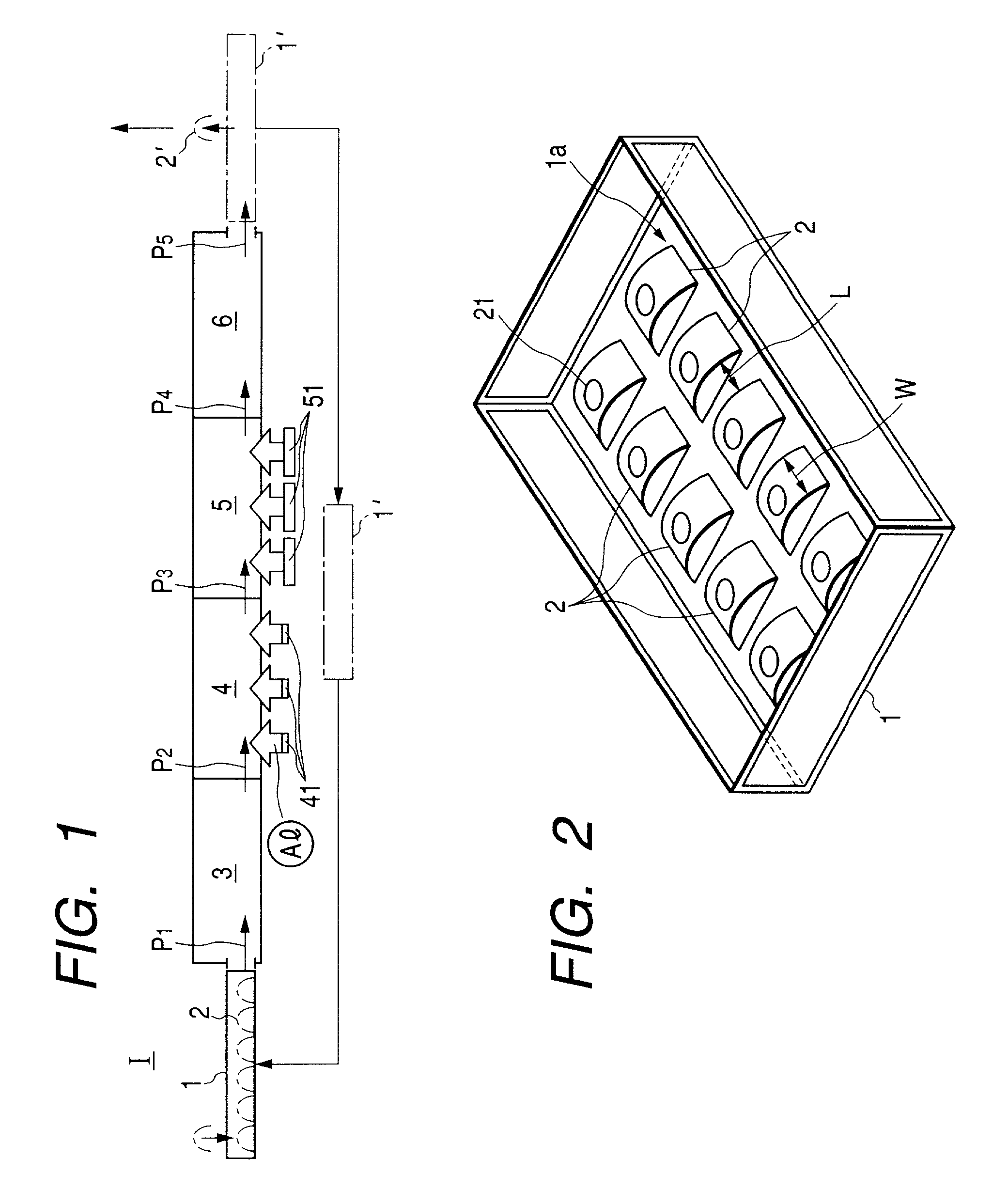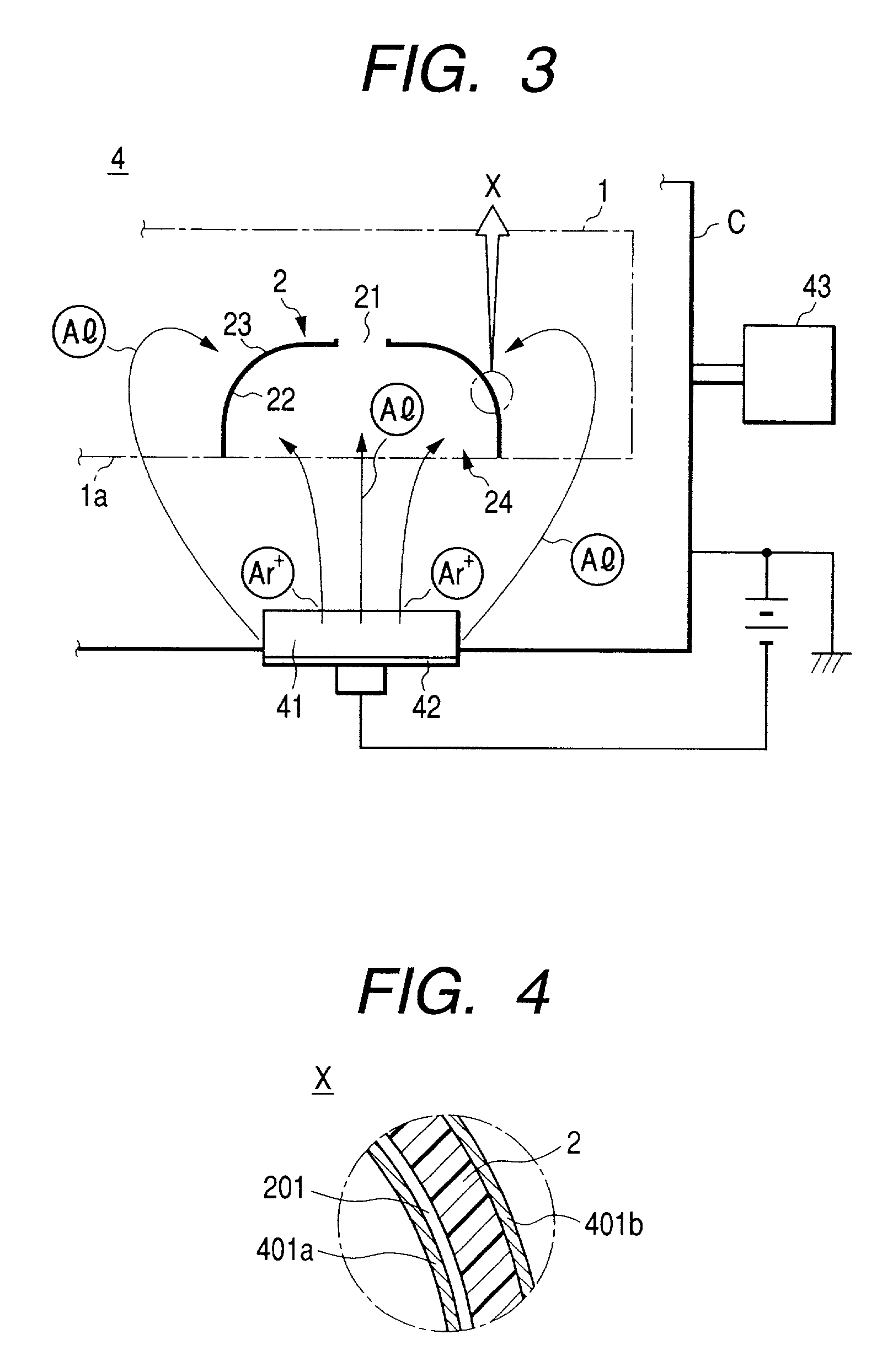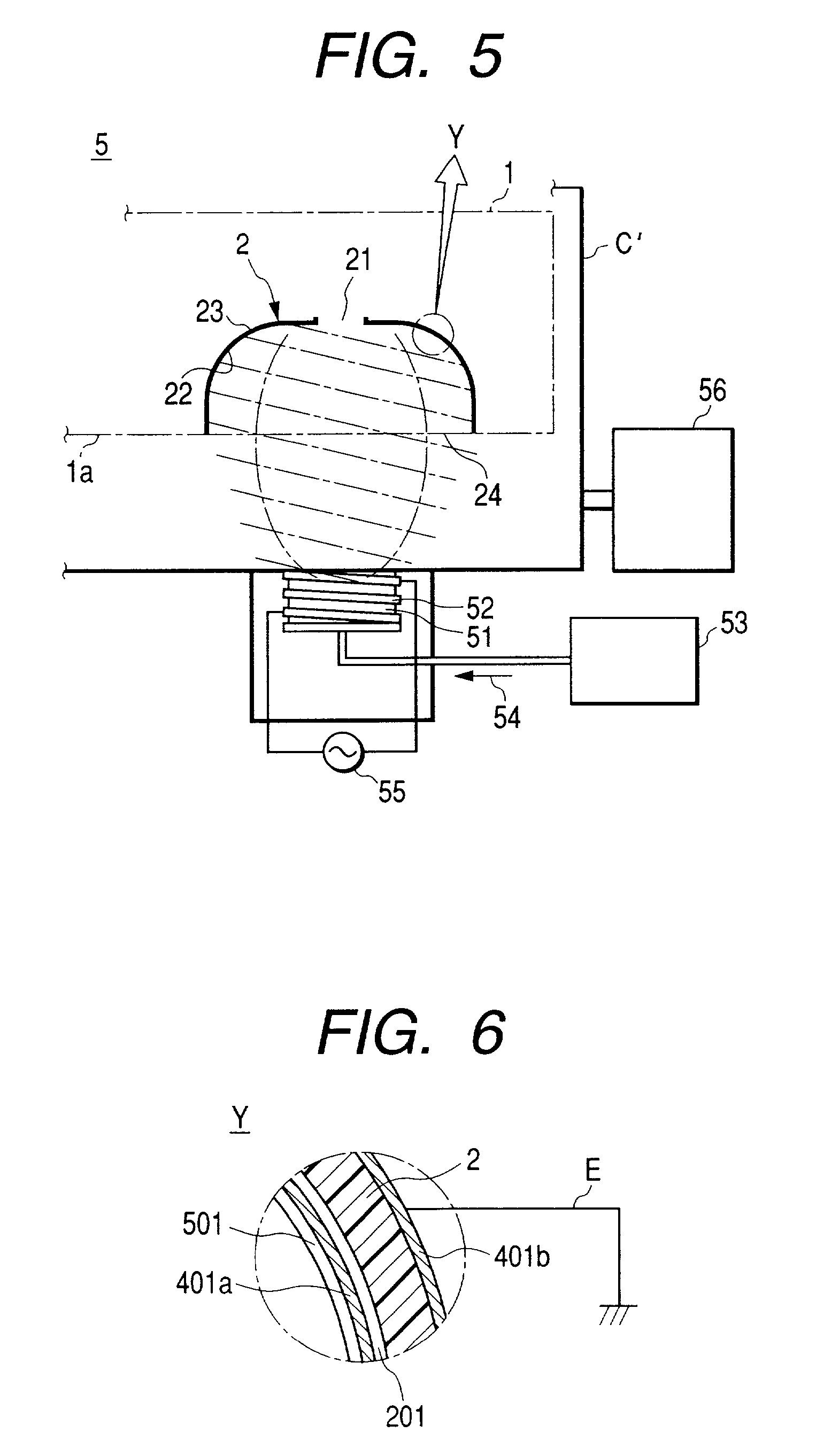Line-type film-forming method and reflector formed thereby
a film-forming method and film-forming technology, applied in signalling/lighting devices, chemical vapor deposition coatings, vehicle headlamps, etc., can solve the problems of complex construction, poor quality of many base materials, and formation of aluminum metallized films and plasma polymerized films
- Summary
- Abstract
- Description
- Claims
- Application Information
AI Technical Summary
Benefits of technology
Problems solved by technology
Method used
Image
Examples
Embodiment Construction
[0042] A preferred embodiment of the present invention will now be described with reference to the accompanying drawings.
[0043] First, FIG. 1 is a simplified diagram illustrating the steps of forming films in a line-type method embodying the invention, wherein an aluminum metallized film and a plasma polymerized film are formed on each of the synthetic-resin base materials forming a reflector to be mounted in a vehicular lamp.
[0044] With reference to FIG. 1, the steps of forming the films, according to the line-type method of the present invention, will be described. At a pretreatment step (not shown), a reflector base material 2 is formed with an undercoat layer 201 (see FIGS. 4 and 6) for securing the smoothness of the base material surface. The reflector base material 2 then is conveyed to a position I where film forming work is started.
[0045] While holding the back surface side (rear top portion side) of each reflector base material 2 with the hand, a worker manages not to touch...
PUM
 Login to View More
Login to View More Abstract
Description
Claims
Application Information
 Login to View More
Login to View More - R&D
- Intellectual Property
- Life Sciences
- Materials
- Tech Scout
- Unparalleled Data Quality
- Higher Quality Content
- 60% Fewer Hallucinations
Browse by: Latest US Patents, China's latest patents, Technical Efficacy Thesaurus, Application Domain, Technology Topic, Popular Technical Reports.
© 2025 PatSnap. All rights reserved.Legal|Privacy policy|Modern Slavery Act Transparency Statement|Sitemap|About US| Contact US: help@patsnap.com



